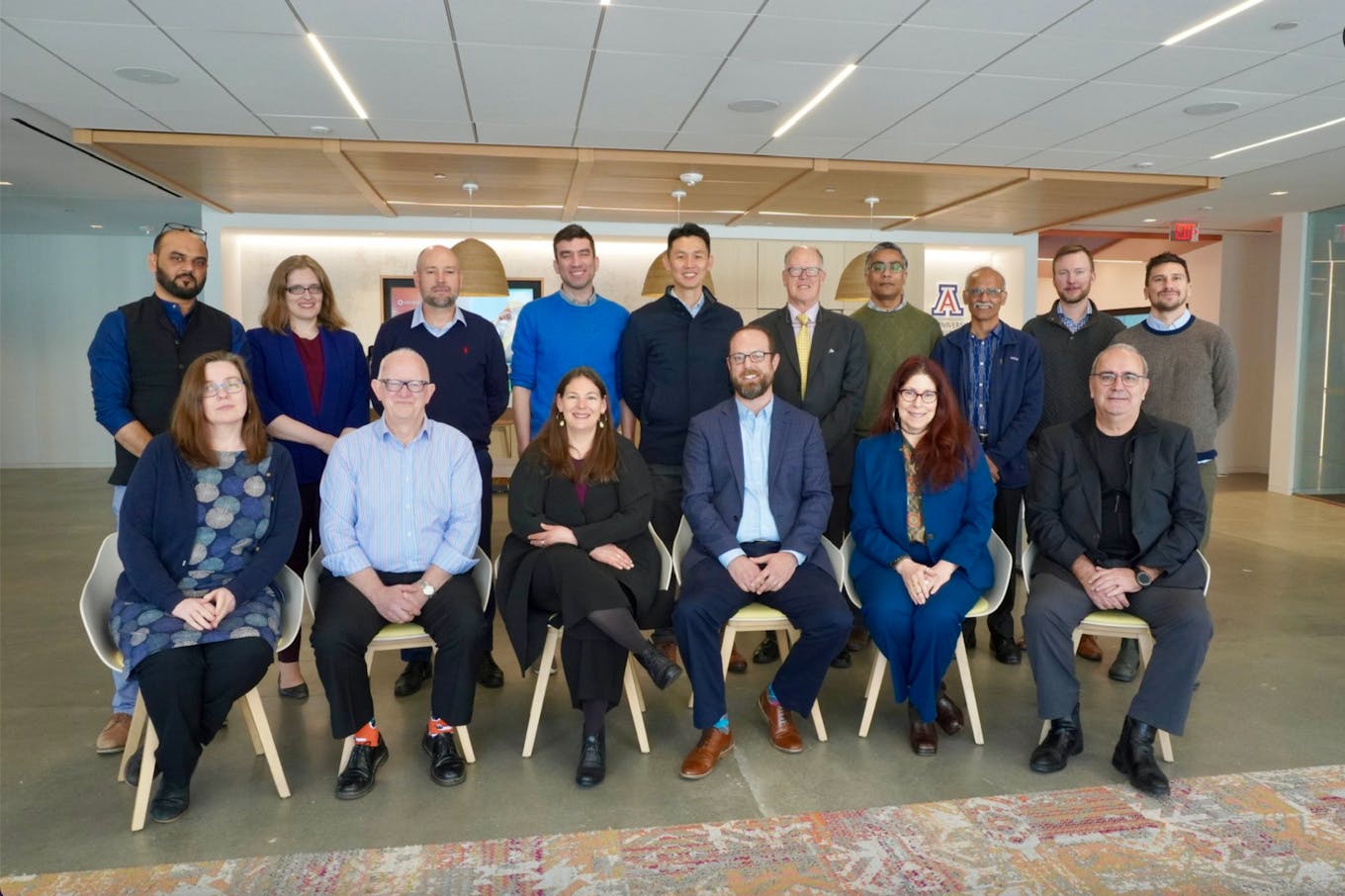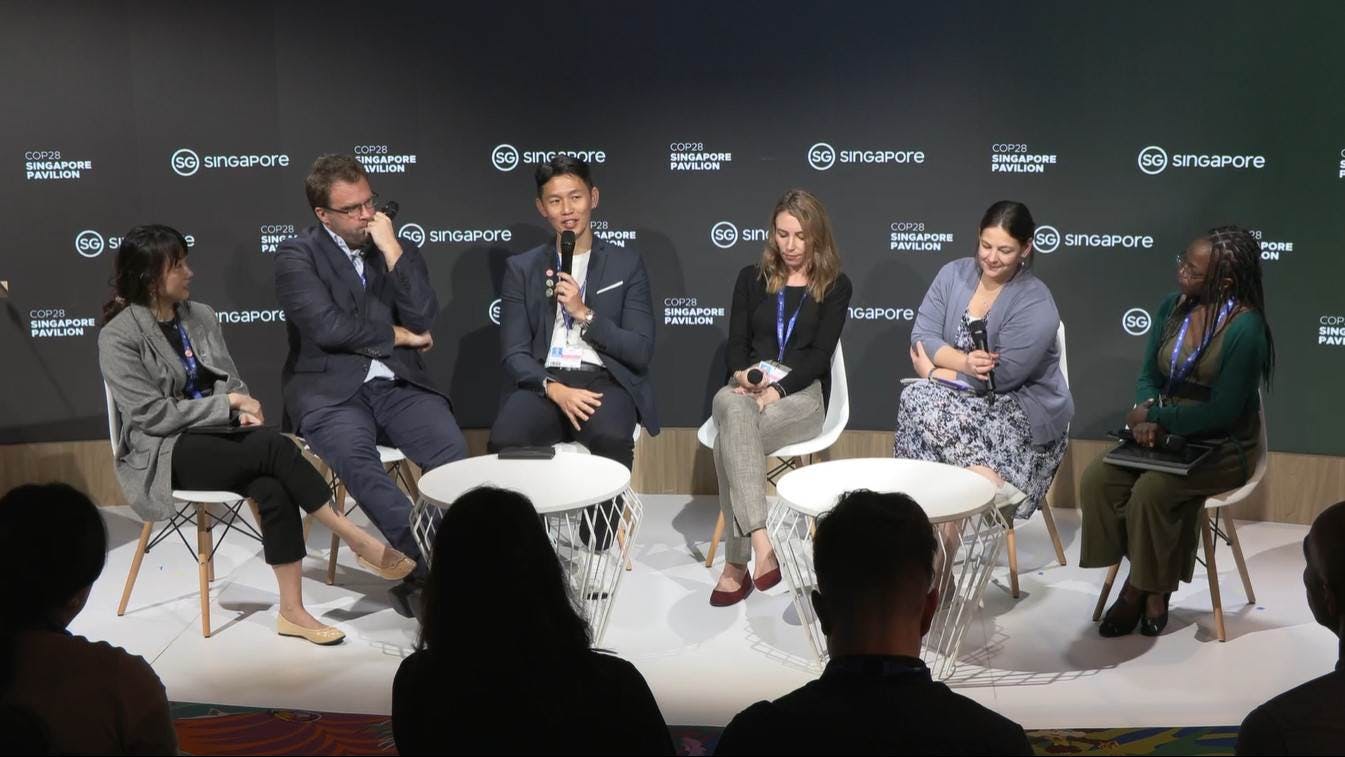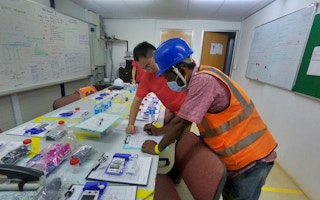International scientific studies have increasingly confirmed that heat is not just bad for the planet, but also for the human body.
To continue reading, subscribe to Eco‑Business.
There's something for everyone. We offer a range of subscription plans.
- Access our stories and receive our Insights Weekly newsletter with the free EB Member plan.
- Unlock unlimited access to our content and archive with EB Circle.
- Publish your content with EB Premium.
Climate health-related research, however, has mostly been carried out in temperate countries and in developed cities, and has tended to exclude Southeast Asia.
This is likely to change in the near future as the region’s policymakers increasingly recognise that when climate change and heat impacts on population health, it can have dire consequences on the workforce and economy. For Southeast Asia, region-specific research is in its infancy.
“Work has only just started in Southeast Asia because we have been ‘boiling frogs’ for the longest time,” said associate professor Jason Lee, who leads the Singapore-based Heat Resilience and Performance Centre, a research outfit that is part of the National University of Singapore’s school of medicine. He adds that adapting gradually or taking “little to no action” to tackle the issue of heat will likely lead to detrimental results, and if the frog is “no longer strong enough to escape”, it will be too late.
Lee notes that key research organisations globally are now also keen to see how research on heat health and productivity in Southeast Asia can be applied for interventions on a wider scale. At the COP28 climate summit in Dubai last December, the centre was appointed as the Southeast Asian node for the Global Health Information Network, an information-sharing initiative jointly managed by the World Health Organisation (WHO) and World Meteoroligcal Organisation (WMO).
In this interview, Lee speaks to Eco-Business about the priorities of the centre for the year ahead and why heat-related research is crucial for Southeast Asia.
“
Managing heat stress is not just good for the workers. Thermal discomfort can make one moody. Healthy and happy individuals are often more productive!
Jason Lee, associate professor and director, Heat Resilience and Performance Centre
How has the thinking behind research on heat health and climate in Southeast Asia evolved in recent years?
Southeast Asia is unique in that, geographically, there are many parts of the region that do not see the four seasons. Many of these places experience warm and humid weather, which with rapid urbanisation and projected population growth, place them in precarious positions – they could be negatively impacted by climate change in many ways, both directly and indirectly.
With increases in temperature without the usual decrease in humidity, as well as the frequency of intense extreme weather patterns becoming more prominent in recent years, there is now more focus and attention on understanding climate change and the nuanced differences of its impacts on specific places. This will help us develop targeted strategies to address these unique impacts. To date, research has largely been focused on developing mitigation strategies that aim to reduce or prevent the emission of greenhouse gases into the atmosphere, which alleviates the factors contributing to climate change. It is only in recent years that more research has been initiated to develop adaptation strategies for preparing and responding to the impacts of climate change to minimise climate risks and protect communities and ecosystems.
Work has only just started in Southeast Asia because we have been “boiling frogs” for the longest time. At least for Singapore, in terms of heat stress, we will be expanding our work in the next few years and look at how to manage heat-related impacts on sectors beyond the military (which the centre has worked with). We have also been tasked to do more for the region.

Associate professor Jason Lee (second row, fifth from left) at a roundtable on scaling heat health early warning system. Image: Global Heat Health Information Network / X
How can the work that the centre is doing potentially guide global research on heat resilience? Can you share some examples?
The impacts of heat stress on humans are specific. The adaptive and response capacities of different cities or countries are also different, so we cannot use a one-size-fits-all strategy when it comes to implementation.
But considerations and principles are transferable. For example, for Project HeatSafe (which is a collaborative research project led by the centre that focuses on protecting people from rising temperatures due to climate change), we developed a methodology together with overseas collaborators to quantitatively (through physiological measurements) and qualitatively (through interviews) profile the heat strain experienced by workers. These ranged from indoor and outdoor construction workers in Singapore, shoe-manufacturing workers in Vietnam to delivery gig workers in South Korea. We also worked with the collaborators to explore the “line efficiency” of line workers in garment factories in Cambodia, and how their productivity is affected by heat. All of this research can be replicated in relevant countries and industries, and can be used to identify cost-effective and scalable interventions to protect workers’ health, wellbeing and productivity in the face of rising heat.
At the Heat Resilience and Performance Centre, with the support of commercial partners, we have also been able to demonstrate real-time monitoring of physiological strain in exertional individuals on a large scale. This would allow us to pick up who among various individuals are at risk of heat injury. Crude approaches and high-level policies are not able to pick up every potential heat case.
What are Southeast Asia’s unique challenges when it comes to managing heat health?
We are afflicted with the boiling frog syndrome, in that we are not aware that our living conditions are deteriorating. We are adapting accordingly to gradually changing circumstances, but that means little to no action is taken to mitigate the situation until we are no longer strong enough to escape, just like a frog in a boiling pot. Then triple whammy – we will have to deal with high heat, humidity and chronic heat all at once.
When this happens, it will mean that we will be always exposed to high heat stress, so there will be risk of heat injuries, work productivity losses and poor decision-making. Accidents due to thermal discomfort could perpetually happen. For those who have the option to regulate their behaviours, they will face the indirect impacts of heat stress too. This includes not being able to do outdoor physical activity or suffering from poor eye health due to a lack of sun exposure.
Air pollution also remains a problem. Moving ahead, we will have to study the two key environmental stressors – pollution and heat – in tandem.
There are many other problems to tackle in this region such as malnutrition, as well as a reduction in water quality which can lead to stunting and diarrhoea. Attention on climate change can bring about renewed focus on these issues. There could be more resources to tackle these “older” problems”. Whatever we do, we will have to do it in collaboration with local communities and co-create solutions so as to foster a sense of ownership.
What are your observations of whether heat health has been prioritised at the political level in Southeast Asia? In what aspects is this still lacking and what could be the consequences be?
Some countries have begun to incorporate these issues into their policies and strategies, recognising the increasing challenges posed by rising temperatures and extreme heat events. Some areas of focus they look at include understanding the urban heat island effect, addressing heat-related challenges in urban planning and understanding the health impacts of extreme heat. However, the degree to which these issues are prioritised differ across the different countries.
We can get better at translating policies into action, as well as increasing public awareness and engagement so that community resilience is strengthened. We can also take a more holistic and integrated approach to developing adaptation strategies to enhance overall resilience.
Extreme heat has an impact on the economy, as it can lead to productivity losses. A lot of news stories focus on its impact on outdoor workers, particularly those in the construction sector, but for Southeast Asia’s urban centres, are there economic impacts that go beyond these spheres?
The economic impacts go beyond outdoor worker productivity. There are many indirect impacts of heat and these hit all segments of society.
For example, extreme heat can impact the growth and development of foetuses and babies, affect learning and potentially reduce physical activity, which in turn results in other health issues like myopia, obesity and even mental illnesses. A strong and healthy workforce is key to a good economy with increased productivity, lower health care costs and lower number of accidents.
Particularly in countries such as Vietnam and Cambodia where manufacturing is a key sector of the economy, indoor factory workers face the effects of extreme heat, particularly on their health and wellbeing, because their areas of work are often in enclosed areas with poor ventilation. Gig or delivery workers in Southeast Asia are also facing the effects of extreme heat.
Can sector-specific heat stress guidance help? How can corporates and businesses be part of the conversation, and what needs to be done?
After Singapore launched its national heat stress advisory last year, different sectors, across education, fire services, law enforcement, marine, healthcare and elderly care, are engaging with us. They want to understand and contextualise the impacts and come up with sector-specific strategies to combat extreme heat. We need to systematically quantify the impacts so we know the scale of the problem and can determine if it warrants intervention. The solutions must be scalable and sustainable.
We should note that managing heat stress is not just good for the workers. It is good for business too. Thermal discomfort can make one moody. Healthy and happy individuals are often more productive!

Lee (third from left) speaking on a panel at the COP28 summit in Dubai. Image: Heat Resilience and Performance Centre
As the newly appointed Southeast Asia research node under the global network, what will be the centre’s key priorities in the new year?
There are four things we need to do. We are still identifying our focus and priorities. We will need to establish essential frameworks for governance, communication and collaboration, as well as form a dedicated organisation and management team. Lastly, we need to develop an effective communication strategy.
These priorities will collectively contribute to efficient coordination, clear decision-making and sustained engagement, ensuring that the network remains responsive to the region’s needs. In 2024, we will also be organising an international heat health forum to bring together key stakeholders, interdisciplinary experts and practitioners for a discussion on heat health.
If there is good coordination at the regional level when it comes to information sharing, what positive interventions would that lead to?
The node will be collecting lessons learnt from our local partners using a standardised instrument tool. This will capture the associated impacts, challenges and policies surrounding heat resilience.
Regional reports will be published and synthesised into good practices which would then help guide the development of consensus statements and advisories. These will serve as a guide for policymakers and practitioners and demonstrate a unified approach to addressing heat-related health challenges in the region.
What are your thoughts on the findings from the latest National Climate Change Study that predicts more days of extreme heat for Singapore by 2050?
It definitely sounds an urgent and important alarm that climate change has impacted us and will continue to impact us with greater intensity.
I am most alarmed by the increase in the number of warm nights in all emission scenarios by mid-century to about 351 days per year. That is almost every day! A poor rest or recovery period for workers will only cause more problems the following day. It should trigger a sense of urgency that we need to take action at all levels proactively and not reactively.
The study also provides data for countries in Southeast Asia and is a good starting point for us to engage in more robust conversations with regional partners about how the climate crisis will directly impact the region. We need to emphasise the urgency to take climate action in a more cohesive and collaborative manner.

















